First things first: Some of you may have missed my last post, which dropped on August 27th – the day my friend Rick and I departed for Burning Man (the subject of this post). It was a pretty good one (especially if you’ve ever had a love relationship with a typewriter), and you can find it here.
And with that bit of housekeeping out of the way...
Burning Man is hard. This reliable understatement has echoed through my cranium during every burn I’ve attended— from my first in 2000 (as a solitary “virgin,” car-camping in a pup tent) through my 13th (in a NASA-worthy ShiftPod) just a little over a week ago.
Yes, it is. It is hard. Very hard. Collecting all the gear that one needs to survive on the barren gypsum expanse of that ancient lakebed is hard. Packing your closed-toe footwear, eye-catching costumes, protein bars, Army cots, dust masks, bedding, bicycle, tools, personal lighting, electrolyte tablets, night and day goggles, solar shower, neck coolers, duct tape, entrance passes, pharmaceuticals, SPF 45 sunscreen, body wipes and water (one gallon per person per day) is hard. The single-lane road to the Black Rock Desert, just north of the Pyramid Lake ancestral lands, is treacherous. The wait to get through the gate and the Greeters, and finally enter the bone-dry environs of the event, can take hours. It takes time to find your camp, even if it is right across from Center Camp and surrounded by a blue picket fence — as was the Black Rock Tea Company: the sweet, hard-working community of 22 friends with whom I would spend my too brief, and seemingly endless, tenure on the playa.
Over the past 24 years I’ve become familiar with the Burning Man ethos, co-authoring a book with the late Larry Harvey (who co-founded the event with Jerry James on the summer solstice of 1986). I know the demands of the event well enough to have known that, despite the proximity of Mobility Camp and my helpful friends, it might be more than I could manage. My decision to go (which I’d made in March) was aspirational; a dare to myself. But as the intervening months swept by, I became convinced that — given my compromised walking ability, baseline pain level, inability to navigate tight spaces (like the ShiftPod), and other Parkinson’s-related issues of skin, brain, and bowel — it was something I simply could not, should not, do.
But equally true was the fact that I’d face the same challenges anywhere — so it might as well be at Burning Man. And so was launched my latest journey into the chaotic world of known knowns, known unknowns, and unknown unknowns, known as Black Rock City.
Why, one might ask, was I so eager to go? Because this sudden city in the Nevada desert is a rare outpost in which one can experience genuine awe. For one week, the playa (and the sky above it) become a vast canvas, animated by hundreds of art installations. They are by turns monumental, imaginative, and emotionally overwhelming.
I wish I could transport all of you two weeks back in time (and 325 miles northeast of Oakland) and immerse you in a “typical” afternoon and evening on the Playa. Since that’s not possible, I’m just going to tell you about some things I loved, and provide links if you’d like more visuals and/or info.
This year I’d actually helped construct an artwork: my friend Sharyl McGrew’s walk-through kaleidoscope (called Kalos: Greek for “beauty”). Other works that moved or awed me were Oleksiy Sai’s I’m Fine, an ironic structure built of bullet-riddled Ukrainian highway signs; Christopher Schardt’s Mariposa, an enormous butterfly whose 26' wide wings beat and shimmered with hypnotic LED patterns; CJay Roughgarden’s Naga and the Captainess, a vast interactive playground featuring a sea serpent and a sunken Spanish Galleon; and Dana Albany’s Release, a 30’ tall sculpture of a headless female figure, facing the sunset and fashioned primarily out of hand-wrought metal butterflies.
As always, Black Rock City’s most profound artwork was the Temple — an architectural edifice of surreal beauty, rising from the Playa like a monument on Mars. Traditionally, the Temple is where Burners go to memorialize their lost loved ones, human and otherwise. In years past I’ve left photos of deceased friends like Wes Nisker, Bob Cowart, and Alison Wright, mentioned in my “Hunt & Peck” post.
This was the first time I’d been to Burning Man since 2019. A lot about me has changed during the past five years. As Sharyl and I walked through the Temple gates — two wooden hands with fingertips touching, as per architect Caroline Ghosn’s ambitious design — Sharyl asked me if I’d brought anything to leave as an offering, a release of pain and loss. “I had a photo I was planning to bring,” I told her, “But in all the craziness of packing I forgot it.”
“Who was it of?”
“Myself.”
This much was true. For even though I had not let it stop me, Parkinson’s did cast in sharp relief the disabilities I’d acquired since my last burn. During my six days on the playa I had to ask for a hand with simple things: moving a five-gallon water carrier, or getting up from a low camp chair. I could no longer walk comfortably among the art installations, or even to the nearby Jazz Club. Bicycling on the dune-riddled playa was a battle with balance, and my dancing at the Kalos disco party awkward and stiff. Navigating amidst the piles of clothes, gear, and other detritus strewn around the ShiftPod I shared with Rick was perilous, and I lost my balance several times.
One of the Ten Principles of Burning Man is “Radical Self-Reliance.” Many of my doubts about attending this year had centered, appropriately, around honoring that code. Though I’d helped build (and disassemble) Kalos, and contributed to the strike of our camp when the event was ending, I was self-aware (and made aware) of my diminished capacity. Often I felt in the way, exiled from the more difficult tasks (like using a Skilsaw) and vaguely humiliated. More than once I had to assert myself, and insist that I could in fact do a job — like help loading plywood sheets onto a flatbed truck — when a fitter friend nudged me aside.
But I did what I could, and asked for help when needed. Am I glad I went? Absolutely. The beauty, awe, and sense of community I experienced on the Playa are indelible. And in the end I felt truly satisfied with my contribution, knowing that I had done my best — although my best, like my substantia nigra, is on a downward curve. But if my goal is to flatten the trajectory of that slide, challenges like Burning Man will be part of that effort.
Yes, Burning Man is hard. But it was not impossible. And though I have no intentions for 2025, I offer another wry mantra, shared by fellow Burners as we depart Black Rock City amid whirlpools and devils of dust: “Next year was better.”
A quick reminder of two exciting trips I’ll be leading late this year and early next:
This November, writing coach Laurie Wagner, poet/practitioner James Hopkins and I will be leading the Wild Writing Nepal workshop to the Kathmandu Valley. It’s truly a life-changing experience, for writers and non-writers alike. If you’ve ever dreamed of visiting Nepal, this is a wonderful opportunity.
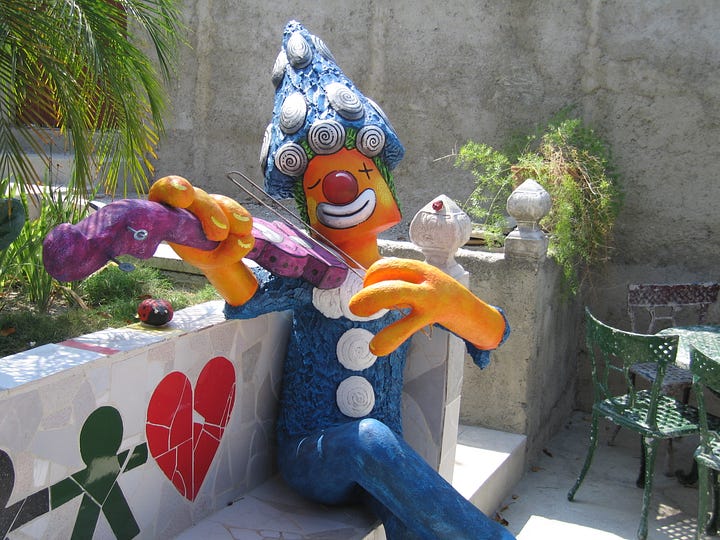
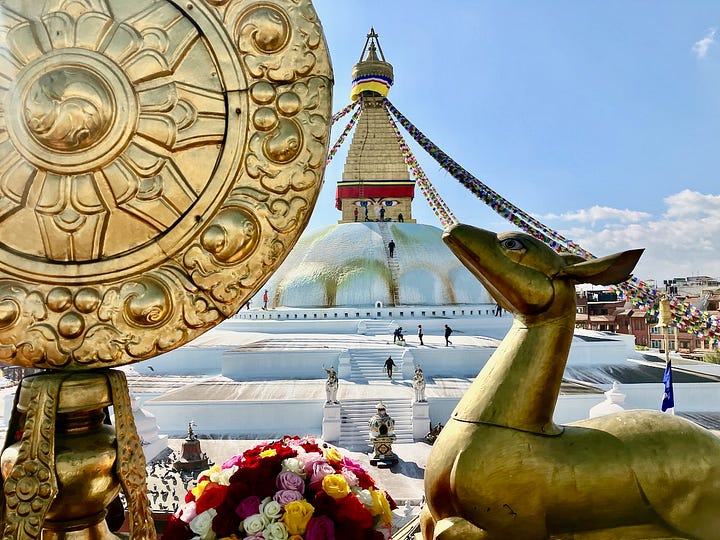
Two months later, in January 2025, I’ll be taking a small group of people (15 at most) to Cuba, where we’ll celebrate Havana’s Plaza Jazz Festival, then journey south to the coastal cultural capital of Trinidad. Curious about Cuba? I’ll tell you this much: I love the place. I think you will, too.
Thanks for reading. Jeffji’s Big World will return shortly after the fall equinox!

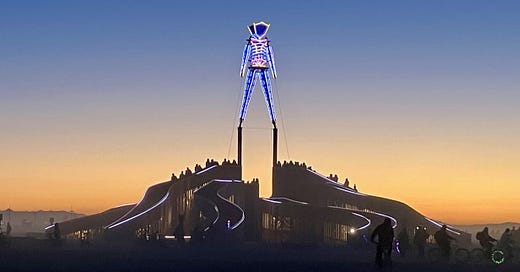



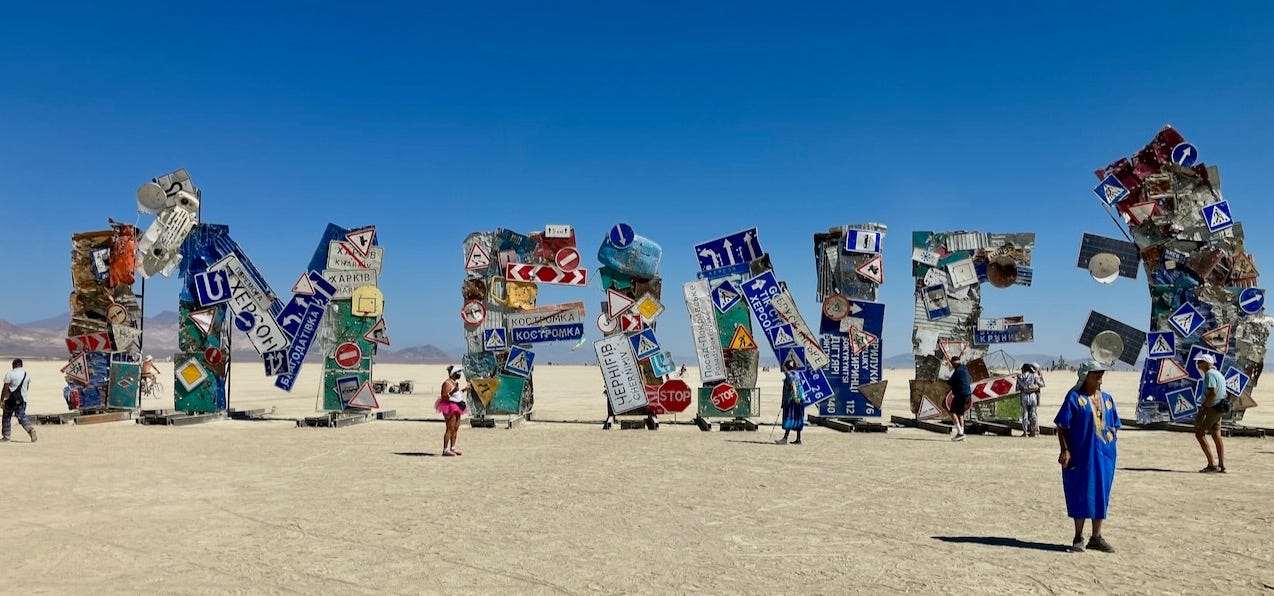


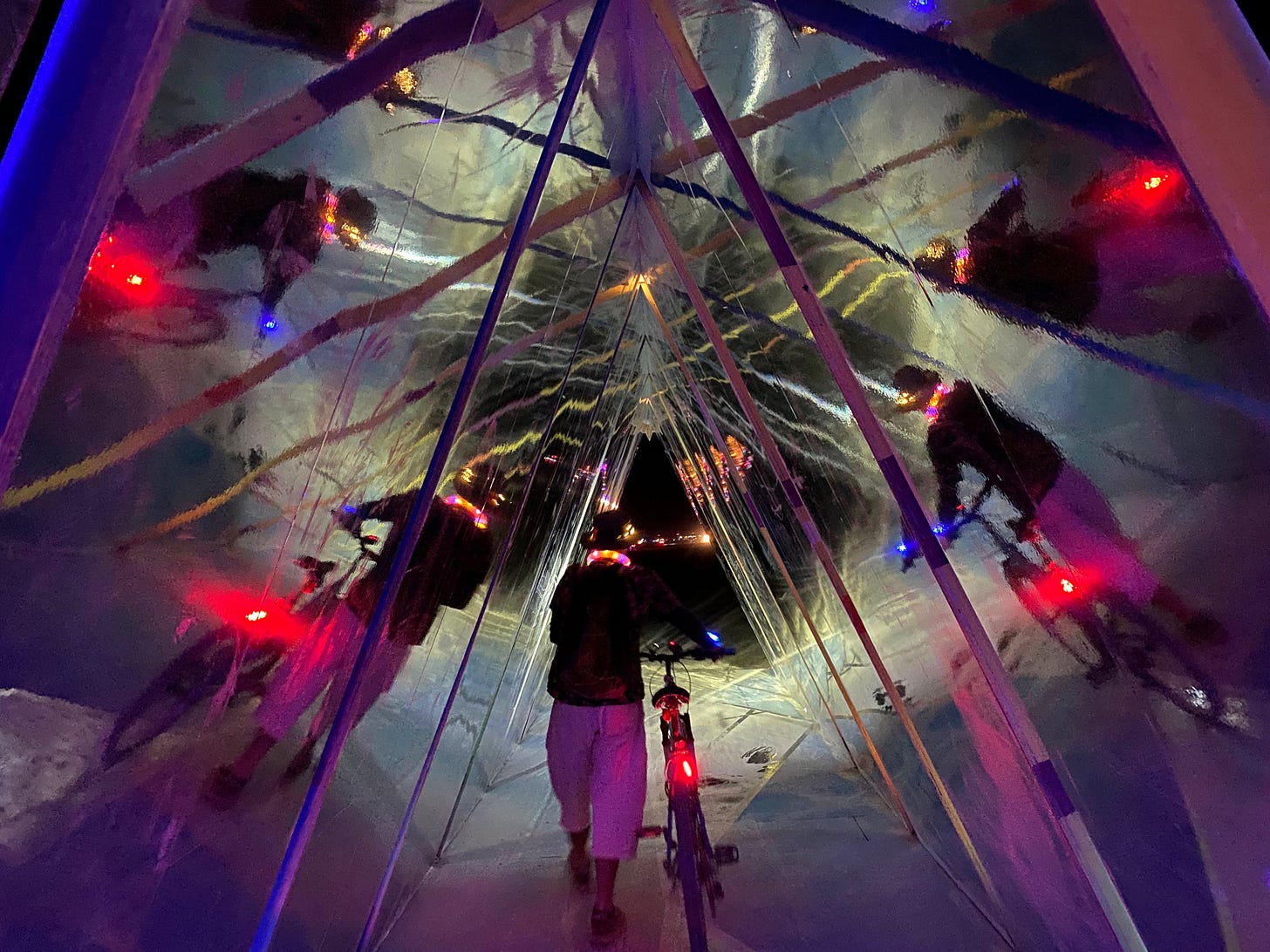
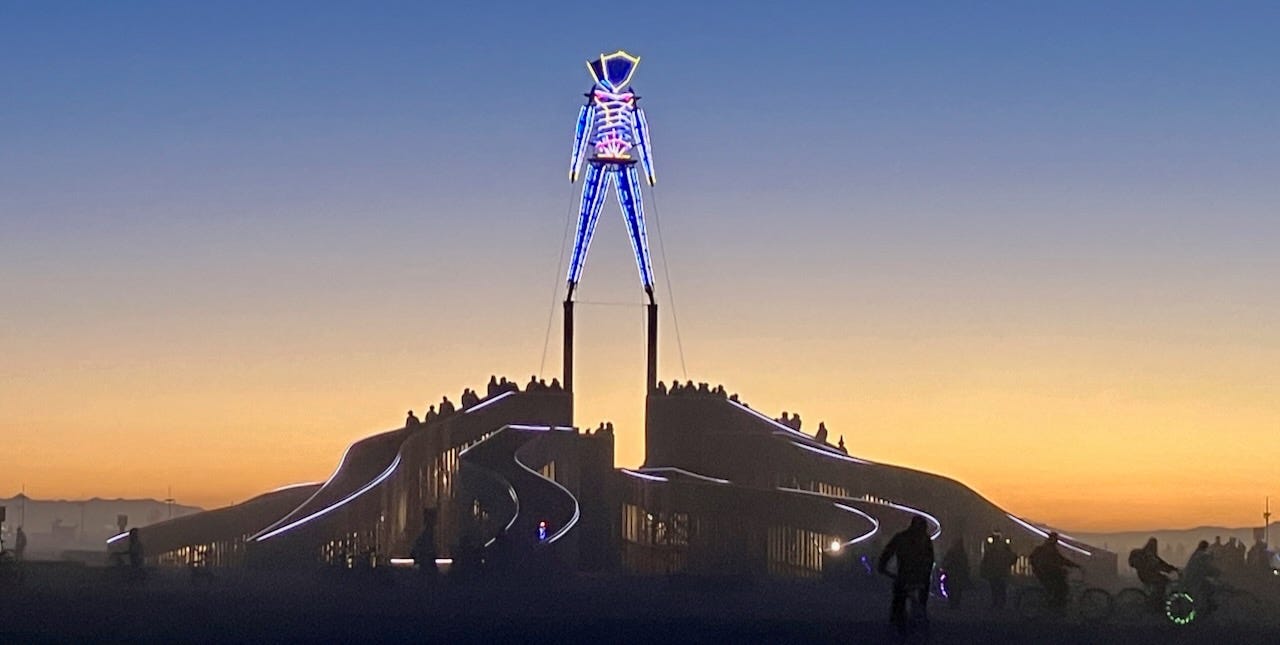
It angers me that humility and humiliation are etymologically close cousins. It heartens me that you embodied the former, not least by embracing those moments of the latter, making even small moments feel momentous.
Thanks for this story.
P.S. Luminous photos.
The photos are just spectacular. I've never been to Burning Man, but now I really feel like I'd like to see it one day, to witness all that amazing creativity.